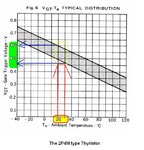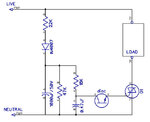MalcolmV8
Newbie level 1
- Joined
- Sep 2, 2011
- Messages
- 1
- Helped
- 0
- Reputation
- 0
- Reaction score
- 0
- Trophy points
- 1,281
- Location
- Kansas City
- Activity points
- 1,326
Hi Guys,
I've been trying to build a simple power up delay circuit for 110 volt skimmer/pump on my salt water fish tank. My issue is that in a power failure water levels change. The sump water level rises a few inches. When power comes back on my auto top off pump is confused and pumps extra water in and my skimmer kicks on with the wrong water level and dumps nasty collected crud back into the tank.
However if both of those items could be on their own delayed power up it would cure those issues. So when power returned if there was a 3 ~ 5 minute delay for the water levels to stabilize and go back to normal, then my skimmer and auto top off get powered back on they'd work as expected.
I did some googling and found this circuit in particular
Time Delay Circuit
It's for 230 volts instead of 115 which we have in the US but not a big deal. I'm sure I could make that work. However I don't fully understand that circuit and would like someone to explain it to me or show me a better circuit (or design a better one).
I was going to just order the parts for that one and try and build it and play around with it but I can't find the SCR 2P4M so that's when I figured I better understand what I need exactly before randomly substituting parts in.
Thanks for any pointers or advice.
Malcolm
I've been trying to build a simple power up delay circuit for 110 volt skimmer/pump on my salt water fish tank. My issue is that in a power failure water levels change. The sump water level rises a few inches. When power comes back on my auto top off pump is confused and pumps extra water in and my skimmer kicks on with the wrong water level and dumps nasty collected crud back into the tank.
However if both of those items could be on their own delayed power up it would cure those issues. So when power returned if there was a 3 ~ 5 minute delay for the water levels to stabilize and go back to normal, then my skimmer and auto top off get powered back on they'd work as expected.
I did some googling and found this circuit in particular
Time Delay Circuit
It's for 230 volts instead of 115 which we have in the US but not a big deal. I'm sure I could make that work. However I don't fully understand that circuit and would like someone to explain it to me or show me a better circuit (or design a better one).
I was going to just order the parts for that one and try and build it and play around with it but I can't find the SCR 2P4M so that's when I figured I better understand what I need exactly before randomly substituting parts in.
Thanks for any pointers or advice.
Malcolm




